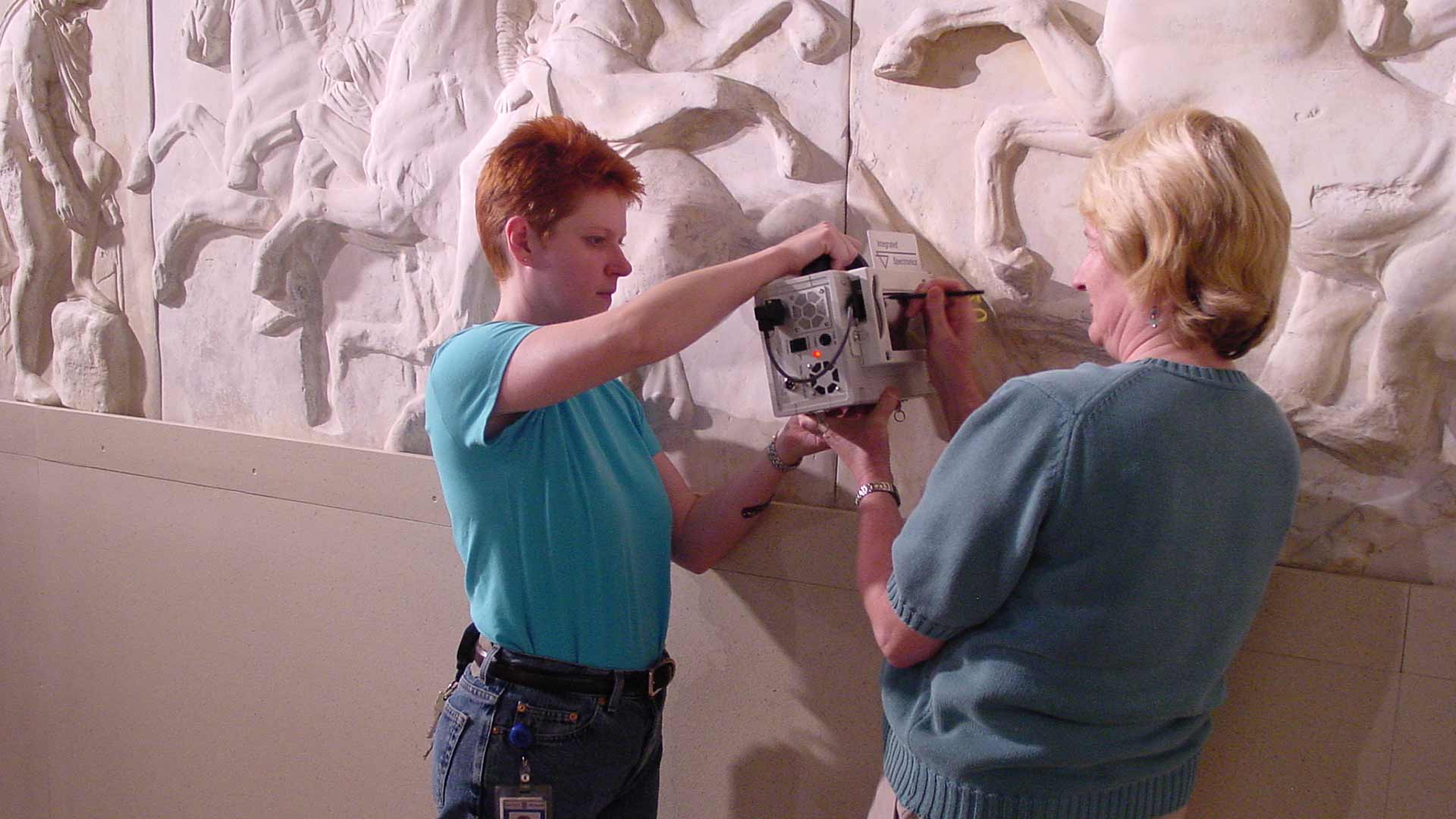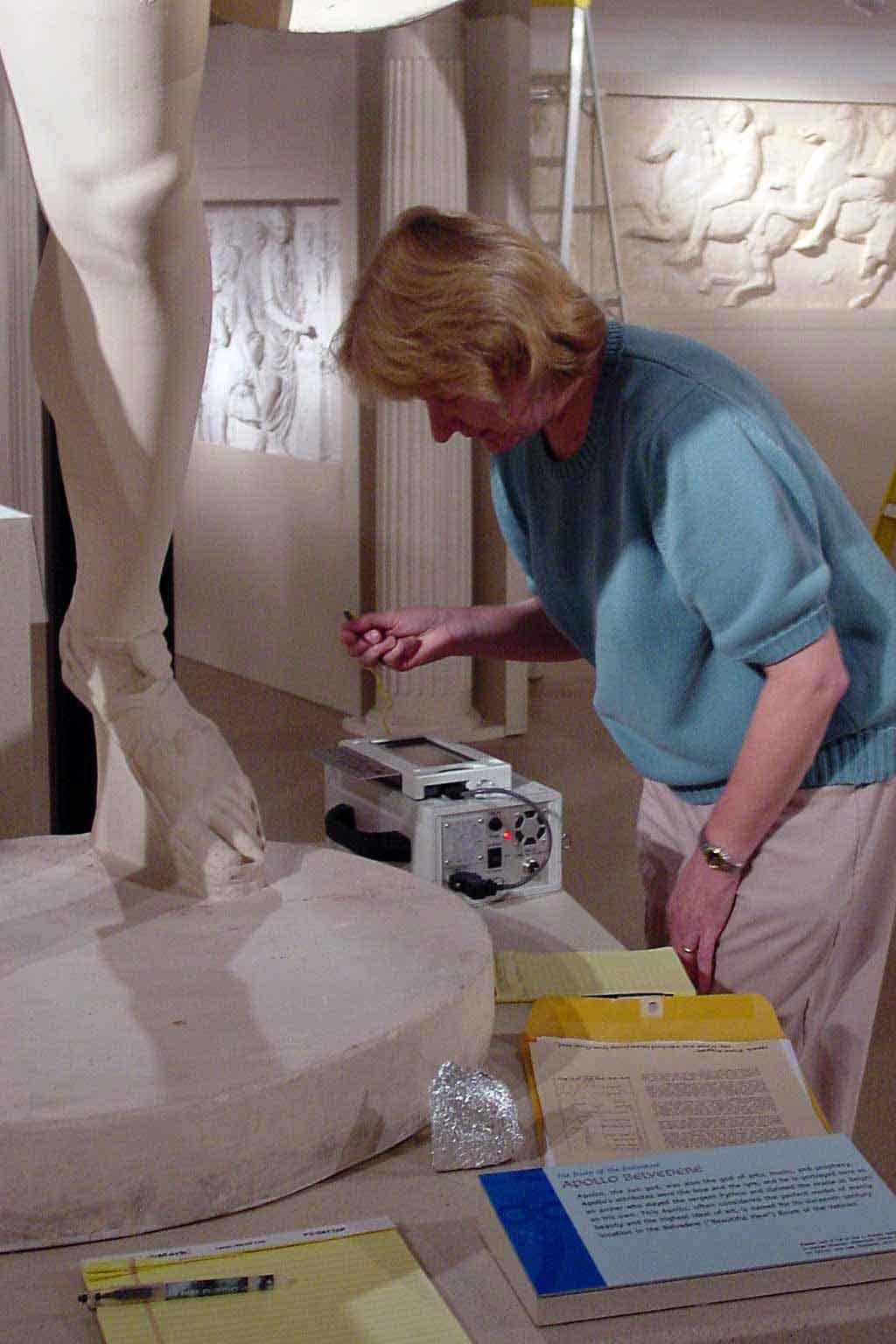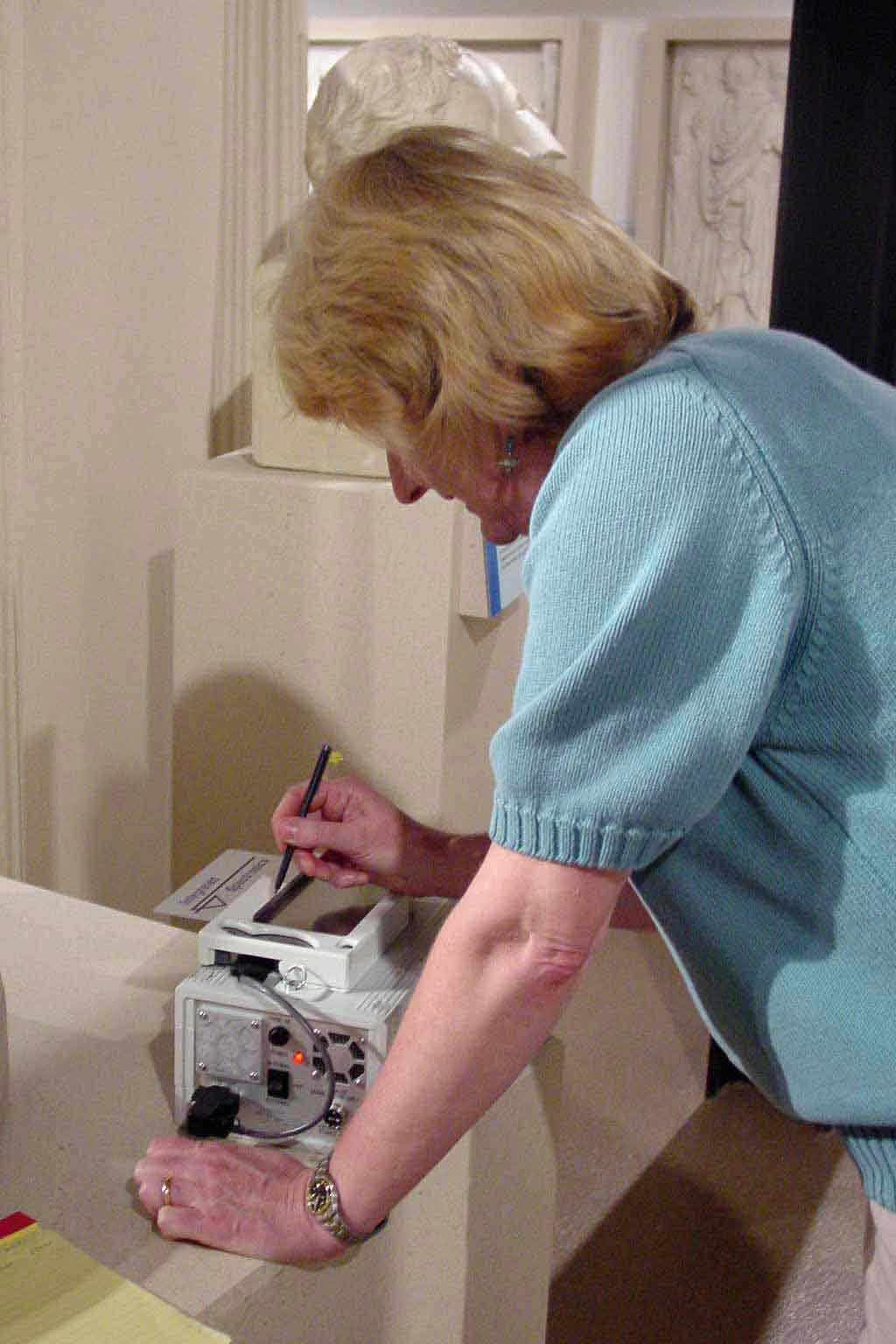
PIMA technology used in artifact conservation
- Post Date: 8/4/2003
- Reading Time: 2 minute read
In an effort to understand the chemical make-up of artifacts in our collection, the Spurlock Museum, in conjunction with ATAM (Program on Ancient Technologies and Archaeological Materials) and MAWG (Midcontinental Archaeometry Working Group), is undergoing research using the latest in technology.
Using PIMA (Portable Infrared Mineral Analyzer) spectroscopy, researchers are able to analyze the chemical content of artifacts without destructive testing.
PIMA spectroscopy works especially well for the items in our collection because it doesn't require us to move them from exhibit or to engage in destructive testing.Christa Deacy-Quinn, Collections Manager
The PIMA is a shoebox-sized, portable infrared spectrometer that can be used for qualitative identification of the minerals in stone and low-fired clay artifacts. The Instrument can be operated in the field or in a museum setting, and the analysis is totally non-destructive. PIMA requires no sample preparation and leaves no radiation damage. The PIMA window is held up against the flat surface of an artifact and the reading takes only 30–60 seconds, allowing the rapid collection of a large number of analyses. Measurements can be made on whole or partial artifacts, potsherds, rock chips, powders, and soil samples.
PIMA spectroscopy uses the short wavelength infrared part of the electromagnetic spectrum (from 1300–2500 nanometers) and measures the reflected radiation from the surface of a sample. This measurement reveals the interatomic bond energies characteristic of specific minerals.
Working with Dr. Sarah Wisseman, director of the ATAM unit at UIUC, the Spurlock Museum is analyzing the composition of surface coatings covering the casts of the Parthenon Frieze and other plaster cast collections. By understanding the type of surface coatings used, we hope to restore the pieces to their original finish.
-
- Share:
- Subscribe to Newletter
- Giving


